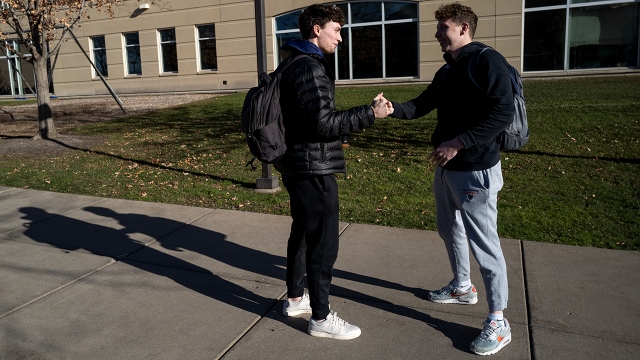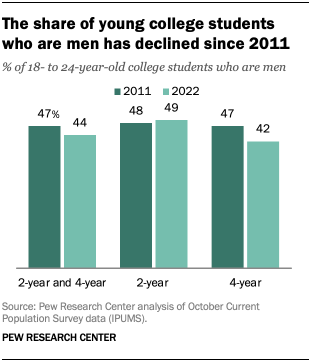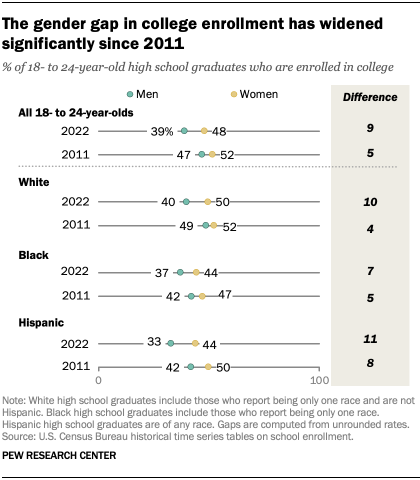
College enrollment among young Americans has been declining gradually over the past decade. In 2022, the total number of 18- to 24-year-olds enrolled in college was down by approximately 1.2 million from its peak in 2011.

Most of the decline is due to fewer young men pursuing college. About 1 million fewer young men are in college but only 0.2 million fewer young women. As a result, men make up 44% of young college students today, down from 47% in 2011, according to newly released U.S. Census Bureau data.
This shift is driven entirely by the falling share of men who are students at four-year colleges. Today, men represent only 42% of students ages 18 to 24 at four-year schools, down from 47% in 2011.
At two-year colleges, which are largely community colleges, the drop in enrollment has been similar for men and women, so the gender balance has not changed much. Men represent 49% of students ages 18 to 24, up slightly from 48% in 2011.
Pew Research Center has a long-standing research commitment to understanding gender gaps in the U.S. workforce, including gaps in workforce preparation and educational attainment.
The U.S. Census Bureau publishes historical tables on 18- to 24-year-olds’ college enrollment dating back to 1967. Its historical college enrollment series uses the October school enrollment supplement of the Current Population Survey (CPS). The specific table used in this analysis is Table A-5 A.
The analysis of the gender balance at two- and four-year colleges uses the October CPS micro data files made available at the Integrated Public Use Microdata Series (IPUMS) at the University of Minnesota.
High school graduates refer to adults who have a high school diploma (including equivalency).
The decline in young college enrollment since 2011 is not driven by a drop in the overall number of 18- to 24-year-old high school graduates. That number has modestly increased since 2011.
Instead, the falling share of young high school graduates who are enrolling in college is causing the decline. And the drop has been greater among young men than women.
Today, only 39% of young men who have completed high school are enrolled in college, down from 47% in 2011. The rate at which young female high school graduates enroll has also fallen, but not by nearly as much (from 52% to 48%).

By race and ethnicity, the widening of the gender gap in college enrollment is most apparent among White high school graduates. Young White women who have finished high school are now 10 percentage points more likely to be enrolled in college than similar men. In 2011, the difference was only 4 points.
A 2021 Pew Research Center survey found that the reasons people give for not finishing college differ by gender.
Among adults who did not have a bachelor’s degree and weren’t enrolled in college, men were more likely than women to say they didn’t go to college because they just didn’t want to or because they didn’t feel they needed more education for the type of job they wanted.
But men and women were about equally likely to say that not being able to afford a four-year degree was a major reason why they hadn’t completed college.
